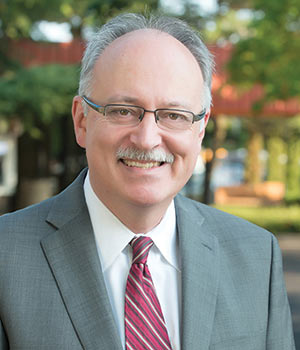A highly skilled workforce is not only essential to the success of any company, but the linchpin of a thriving community.
Unfortunately, many of our local businesses are without access to a qualified talent pool, especially in high-demand tech jobs in Southwest Washington.
To address this challenge, business, education and higher education leaders have spent the past decade working on a solution. Their innovative thinking and creative approach resulted in the creation of the Southwest Washington STEM Network.
Today, the Network serves as a powerful example of how educators and business leaders can collaborate to provide career-connected learning experiences for students, while also producing additional skilled workers in high-demand areas.
At the heart of the STEM Network are valuable student internship opportunities, professional mentoring from industry professionals and – new this year – an advanced manufacturing pilot program that provides a part-time paid work-based learning experience at SEH America, a world leader of silicon manufacturing.
Designed for recent high school graduates from Evergreen Public Schools, the program at SEH America also offers participants the opportunity to earn associate degrees at Clark College. Six students began their apprenticeship journey in the summer of 2018.
Following conversations in 2005 among the “High Tech Council,” a cadre of business and education leaders, Evergreen and SEH America were two early leaders in forming the STEM Network. As part of an effort to train potential workers, SEH began providing career-connected learning experiences for students at their job site in Vancouver.
Ben Bagherpour, SEH vice president of quality, IT and support services, and John Deeder, former superintendent of Evergreen Public Schools, recognized both the need for businesses to train up a skilled workforce and schools to provide essential career-connected learning experiences for high school students as part of their academic program.
Since its inception, the STEM Network has gone from two school districts and two business partners to 26 participating school districts in six counties, 17 businesses, and two institutions of higher education – Clark College and Washington State University Vancouver. SEH alone has grown its program to include career training for more than 300 students. And SEH has hired one third of the interns they helped train.
While the Southwest Washington STEM Network has its own board of directors, Educational Service District 112 serves as the fiscal agent and provides administrative oversight. As the network grows, it is attracting attention statewide. Washington Gov. Jay Inslee visited ESD 112 this spring to learn more about the program. He called the STEM Network model one he can highlight as the state puts his Career Connect Washington initiative into action.
“Career-connected learning can work in every corner of the state in multiple industries,” Inslee said. “We are working to prepare the next generation of Washington’s workforce for high-demand, good-paying careers and we want to give every kid a path for future success, whatever their vision might be.”
As superintendent of ESD 112, a service agency that manages more than 300 different educational support programs, I’m proud of the collaborative work and passion of local businesses, schools, community partners and institutions of higher education that are bringing more relevant work training and career exploration to the students of Southwest Washington.
STEM FACTS
STEM is an economic driver in SW Washington with 81 percent of new jobs in SW Washington requiring a STEM-related post-secondary certification, credential or degree. Almost 60 percent of those jobs require only a 1- to 2-year certification or credential.
STEM jobs pay $57,000 compared to non-STEM jobs, which pay $34,970, in the Portland metro area, according to the Brookings Institution. Many high-tech manufacturing jobs in high-demand fields do not require a four-year degree.
Washington’s economy is growing, but our state’s schools aren’t preparing enough students for this economy. Too many fall out of the system over time. Only one third of area students who start high school each fall are expected to obtain a post-secondary certification, credential or degree.




